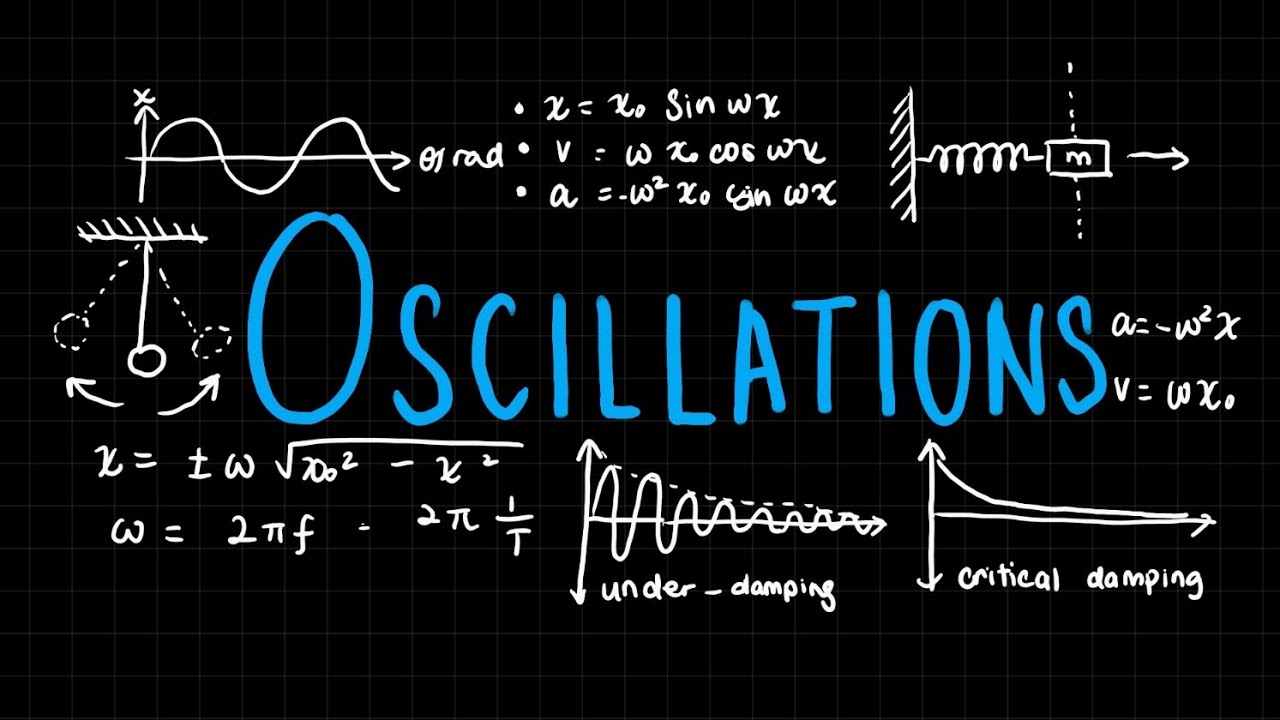
What is oscillation? Oscillation refers to any repetitive variation, typically in time, of some measure about a central value or between two or more different states. Think of a pendulum swinging back and forth or a guitar string vibrating after being plucked. Oscillations are everywhere, from the ticking of a clock to the alternating current in your home. They can be simple, like a child on a swing, or complex, like the waves of the ocean. Understanding oscillation helps us grasp how energy moves and changes form. Ready to learn some cool facts about this fascinating phenomenon? Let's get started!
What is Oscillation?
Oscillation is a repetitive variation, typically in time, of some measure about a central value. It can be found in various forms across different fields of science and everyday life. Let's dive into some fascinating facts about oscillation.
-
Oscillation in Physics: In physics, oscillation refers to any periodic motion that repeats itself in a regular cycle, such as a pendulum swinging back and forth.
-
Simple Harmonic Motion: A type of oscillation where the restoring force is directly proportional to the displacement. Examples include springs and pendulums.
-
Damped Oscillation: When an oscillating system loses energy over time, leading to a gradual decrease in amplitude. This can be seen in a swinging pendulum that eventually comes to a stop.
-
Forced Oscillation: Occurs when an external force drives the system. For example, pushing a child on a swing.
-
Resonance: When the frequency of forced oscillation matches the system's natural frequency, causing a significant increase in amplitude. This is why a singer can shatter a glass with their voice.
Oscillation in Nature
Nature is full of oscillatory phenomena, from the smallest particles to the largest celestial bodies. Here are some examples.
-
Heartbeats: The human heart oscillates as it pumps blood, creating a rhythmic beat.
-
Breathing: The process of inhaling and exhaling is an oscillatory motion.
-
Seasons: The Earth's tilt and orbit around the Sun cause seasonal oscillations.
-
Tides: The gravitational pull of the Moon and Sun causes the ocean tides to oscillate.
-
Animal Movements: Many animals exhibit oscillatory movements, such as the flapping of bird wings or the swimming motion of fish.
Oscillation in Technology
Oscillation plays a crucial role in various technological applications, making our modern world possible.
-
Clocks: Pendulum clocks and quartz watches rely on oscillatory motion to keep accurate time.
-
Radio Waves: Oscillating electric currents generate radio waves, enabling wireless communication.
-
AC Electricity: Alternating current (AC) electricity oscillates back and forth, powering our homes and devices.
-
Microphones and Speakers: These devices convert sound waves into electrical signals and vice versa through oscillation.
-
Lasers: Light amplification by stimulated emission of radiation (laser) involves oscillating light waves.
Oscillation in Mathematics
Mathematics provides the tools to describe and analyze oscillatory behavior in various systems.
-
Sine and Cosine Functions: These trigonometric functions describe simple harmonic motion and are fundamental in the study of oscillations.
-
Differential Equations: Many oscillatory systems can be modeled using differential equations, which describe how a system changes over time.
-
Fourier Series: A mathematical method to break down complex oscillations into simpler sine and cosine components.
-
Eigenvalues and Eigenvectors: Used in linear algebra to study the properties of oscillatory systems.
-
Chaos Theory: Some oscillatory systems exhibit chaotic behavior, where small changes in initial conditions lead to vastly different outcomes.
Oscillation in Everyday Life
Oscillation isn't just a scientific concept; it's something we encounter daily.
-
Music: Musical notes are produced by oscillating strings, air columns, or electronic circuits.
-
Swings: Playground swings are a simple example of oscillatory motion.
-
Engines: Internal combustion engines rely on oscillating pistons to generate power.
-
Fans: Oscillating fans move air back and forth to cool a room.
-
Washing Machines: The drum of a washing machine oscillates to clean clothes effectively.
Fun Facts about Oscillation
Let's end with some fun and quirky facts about oscillation that might surprise you.
-
Earth's Oscillation: The Earth itself oscillates slightly due to gravitational interactions with the Moon and Sun.
-
Human Brain Waves: Brain activity involves oscillatory patterns, which can be measured using an electroencephalogram (EEG).
Oscillation Facts: The Final Beat
Oscillation isn't just a fancy term. It’s everywhere. From the pendulum in a clock to the vibrations of your guitar strings, oscillation makes the world tick. Understanding these facts can help you see the hidden rhythms in everyday life.
Knowing how oscillation works can even help in fields like engineering and medicine. For instance, heartbeats and brain waves are forms of oscillation. Recognizing patterns in these can lead to breakthroughs in health.
So next time you see something swinging back and forth or hear a repetitive sound, remember it’s all about oscillation. It’s a fundamental part of nature, science, and technology. Keep these facts in mind, and you’ll start noticing oscillation’s role in ways you never imagined.
Was this page helpful?
Our commitment to delivering trustworthy and engaging content is at the heart of what we do. Each fact on our site is contributed by real users like you, bringing a wealth of diverse insights and information. To ensure the highest standards of accuracy and reliability, our dedicated editors meticulously review each submission. This process guarantees that the facts we share are not only fascinating but also credible. Trust in our commitment to quality and authenticity as you explore and learn with us.
